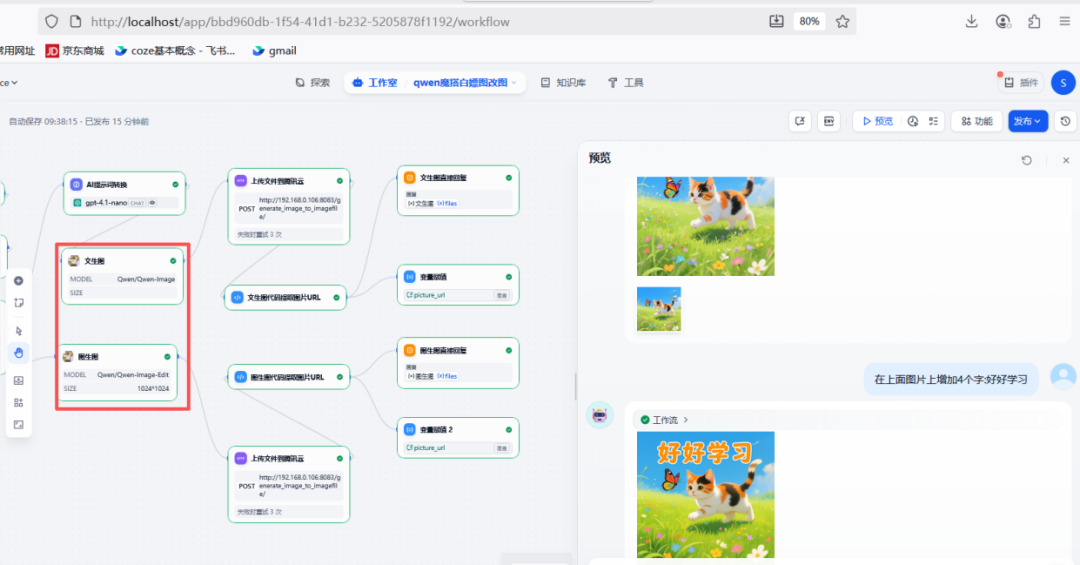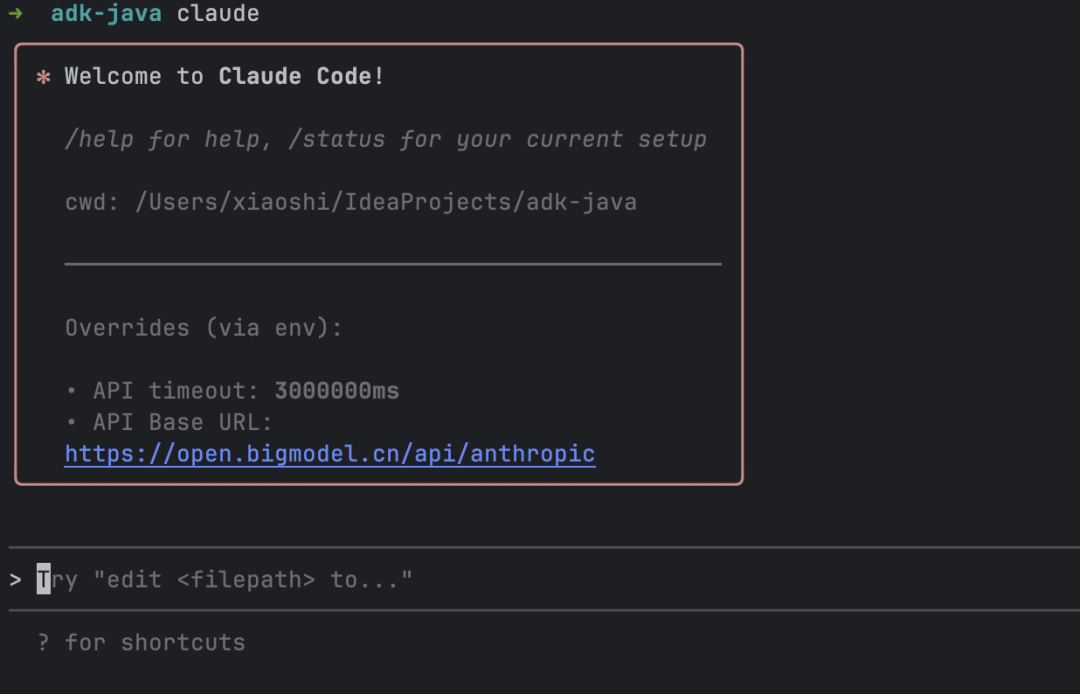The promise of early AI-assisted programming tools was wonderful, but many deep users are experiencing the same dilemma in practice: loss of control. Whether it's Cursor exist Agent mode to refactor the code without constraints, or the claude code The lack of checkpoints in such command-line tools makes it difficult to undo critical changes, reflecting the gap between rapid prototyping and serious development that exists in current tools.
When a developer tries to pass detailed rules (such as the cursor.rulesThe AI will still modify the code "on its own", even when the user forgets to execute the git commit when a single false acceptance could contaminate the entire code base. This uncontrollability is the core challenge faced by the first generation of AI coding tools.
In this context, Amazon Web Services (AWS) has introduced its new AI integrated development environment (IDE) - the Kiro. [1, 2, 4, 5] Kiro The goal of the project is to address the industry's pain points by transforming the popular "vibe coding" among developers, which relies on intuition and natural language, into structured, maintainable "viable code. [1, 5]
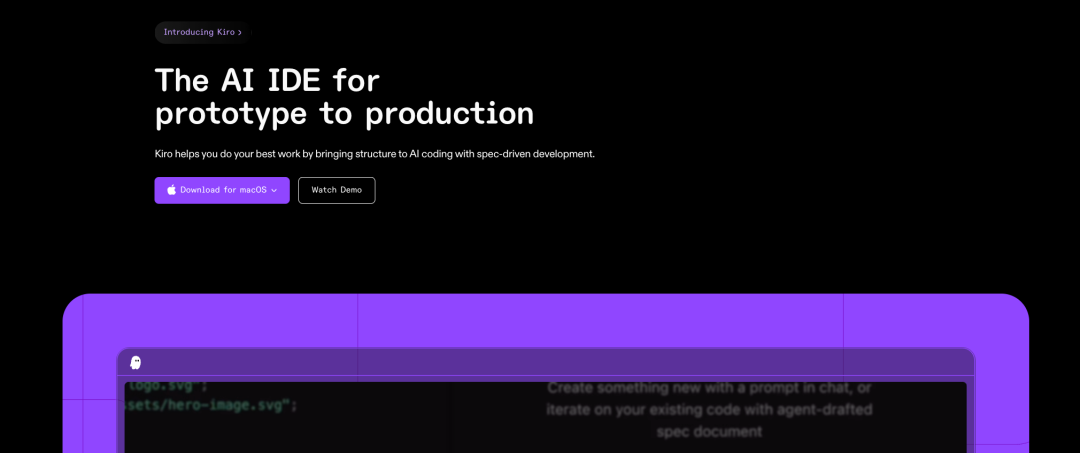
Norm-driven: Kiro's core solution
Kiro The design philosophy is different in that it shifts the focus from "immediate generation" to "pre-specification". This philosophy is centralized in its spec In mode. [1]
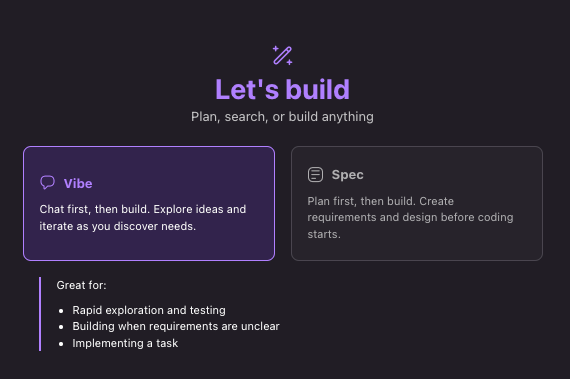
together with vibe mode is similar to the Cursor of simple dialogic task processing is different from that ofspec The pattern introduces a three-step workflow. When a developer introduces a file, either through natural language or through the introduction of a file (e.g., the # a file) to create a spec whenKiro The following process will be initiated:
- Requirement: AI first generates a requirements clarification document to confirm with the developer that their understanding of the task is accurate. The developer can iterate on this document until they are satisfied.
- Product Design: After confirming the requirements, the AI outputs a Product Requirements Document (PRD) that includes the technical design, data flow diagrams, and API endpoints. [1] Developers align again to ensure that the product design meets expectations.
- Development Programs (Tasks): Finally, based on the determined PRD, the AI generates a detailed, actionable list of development tasks.
This process essentially builds software engineering best practices into the AI coding process, greatly constraining the behavior of the AI through front-loaded communication and alignment, ensuring that subsequent development is strictly in line with the stated goals.
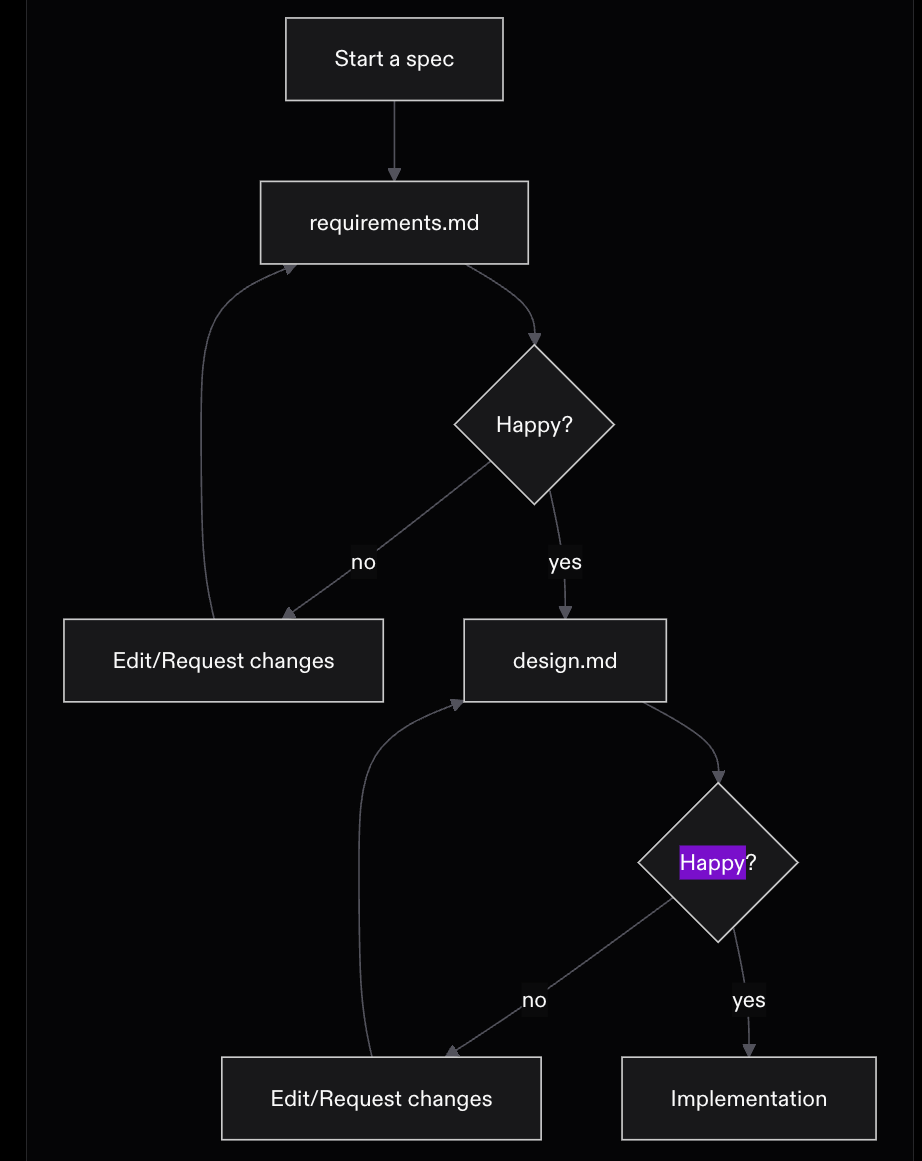
Central dashboard: integrated control center
Kiro Provides a powerful dashboard that centralizes the management of multiple advanced features that would otherwise need to be manually configured through a visual interface.
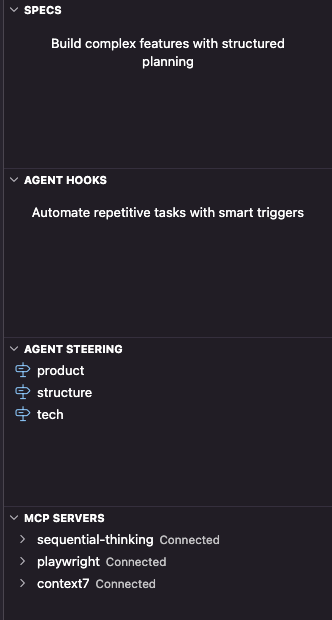
This panel integrates the following core modules:
- Specs (mandate specification): Manage all the data that passes through the
specRequirements and development tasks for schema creation. - Agent Hooks: An event-driven automation system. [1, 4] For example, it can be set up to automatically update test cases, refresh documentation, or perform security scans every time a file is saved or modified, thus establishing a continuous quality threshold.
- Agent Steering: By
MarkdownThe document defines the project's coding specifications, architectural patterns, and technology selections that guide the behavior of the AI. [4] - MCP Servers: Allowed
KiroSecurely connect to external tools, APIs, and data sources to extend the boundaries of its capabilities. [2, 4]
Details designed for the developer experience
For beginners and developers looking for a stable workflowKiro The polish on the interaction details is particularly good.
Clear Difference Comparison and File-Level Rollback
Kiro Uses the classic and intuitive left/right split screen diff The interface, with lines of code corresponding to each other, allows for clear review even when a large number of code changes are made.
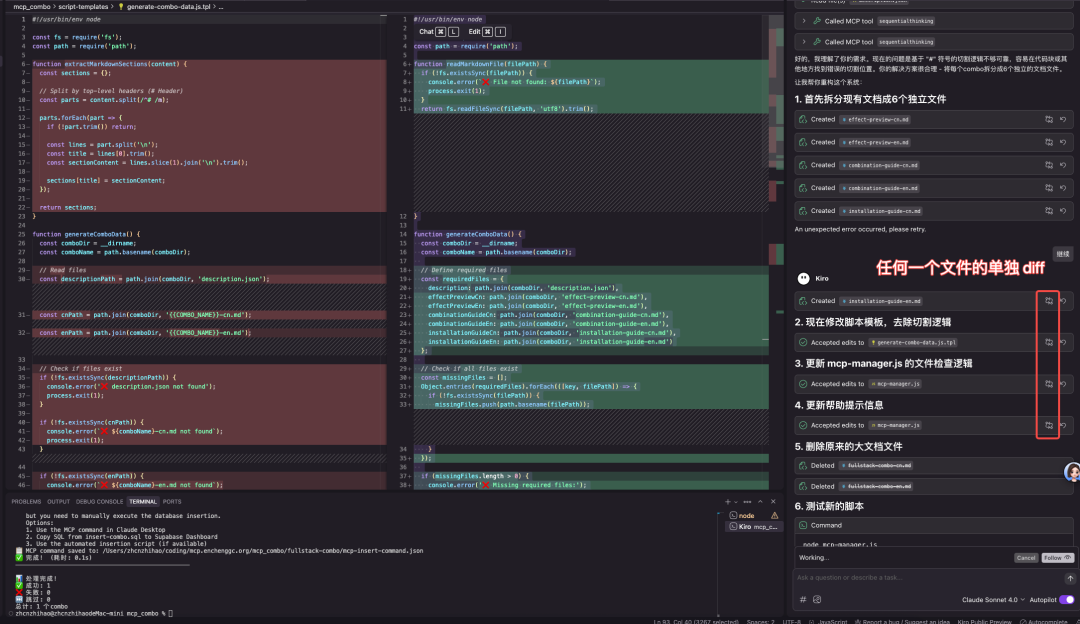
More importantly.Kiro Checkpoint rollback is supported for individual files. This means that when reviewing code, developers can undo only the incorrect changes to a single file without having to worry about rolling back other correct changes along with it, providing a far superior claudecode and other tools for fine-grained control.
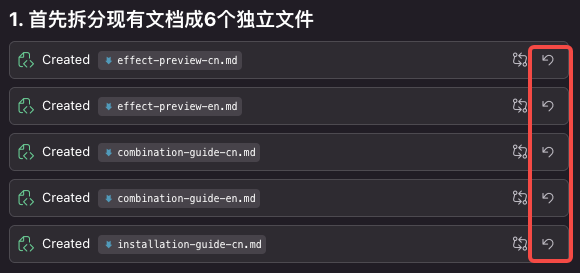
Post-dialog execution versus interruption at any time
Kiro (used form a nominal expression) follow Mechanisms and Cursor (used form a nominal expression) accept There is a fundamental difference.Cursor (used form a nominal expression) Agent Once the mode is activated, modifications are often applied automatically without giving the developer time to react. While Kiro At the end of a full conversation, all changes are listed for the developer to review and optionally accept, and the developer can start a new conversation with the AI at any time to address a particular change.
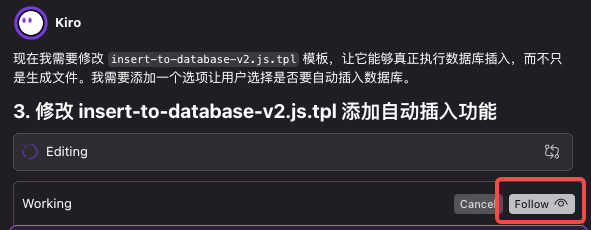
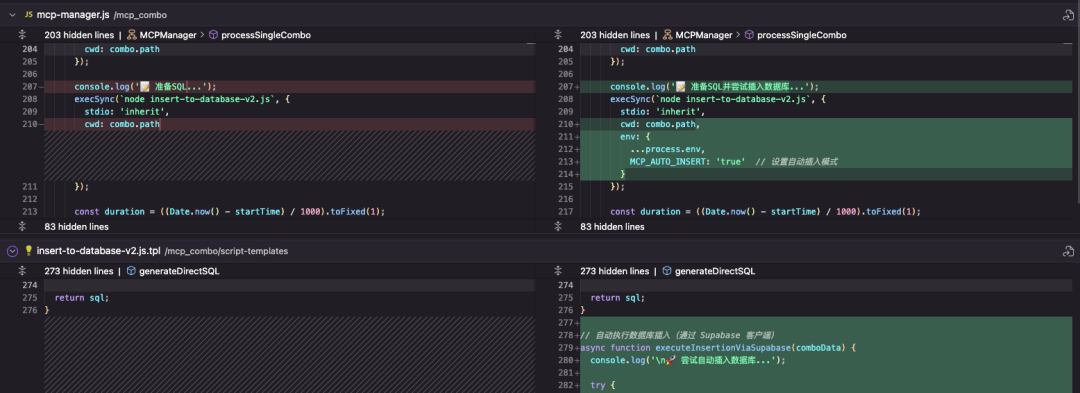
In addition.Kiro Allows the user to interrupt the AI at any time it is performing a task. It accurately remembers the context before the interruption and reprograms it based on new instructions, showing good context management.
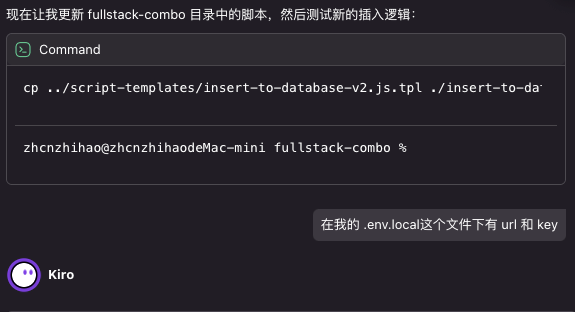
At the same time, its built-in notification system solves a pain point for developers. When the AI is performing tasks such as npm install When the user confirms a command, it will send a notification, avoiding the embarrassment of the developer coming back to find that the AI has been waiting in the same place after dealing with other matters.

Kiro Best Practice Pathway
Based on a project for a website MCPcombo The experience of the development sprints can be summarized Kiro of a set of efficient practice paths.
- Defining Agent Steering: Before the project begins, configure the
Agent SteeringTheKirooffersproduct(Product),structure(Architecture),tech(technology) templates for the three dimensions of the cue word, which can be used by theClaude 4 SonnetAutomatically generated for predefining AI roles and behavioral guidelines. - Execute the spec command: The requirements document (via the
#(Introduced) toKiro, directing its generation ofspec. This will producerequirement,product,tasksThree core documents that provide a stable framework for the entire development process. - Mandate by mandate: in
taskpage, so thatKiroPerform development tasks one by one and test to verify. - Managing Requirement Changes: When the demand changes, it can be done directly in the
requirementmaybeproductdocument to modify it, and then let theKiroAutomatically update subsequent documents and task lists before repeating themspeccap (a poem)taskProcess.
Kiro With its specification-driven philosophy and meticulous attention to the developer experience, it offers an attractive alternative to the currently chaotic world of AI coding. It may not be the most powerful product, but its balance of control and efficiency makes it one of the best introductory tools for guiding developers from "sense programming" to a structured, engineered development process. It is one of the best introductory tools to guide developers from "feel programming" to a structured, engineered development process.
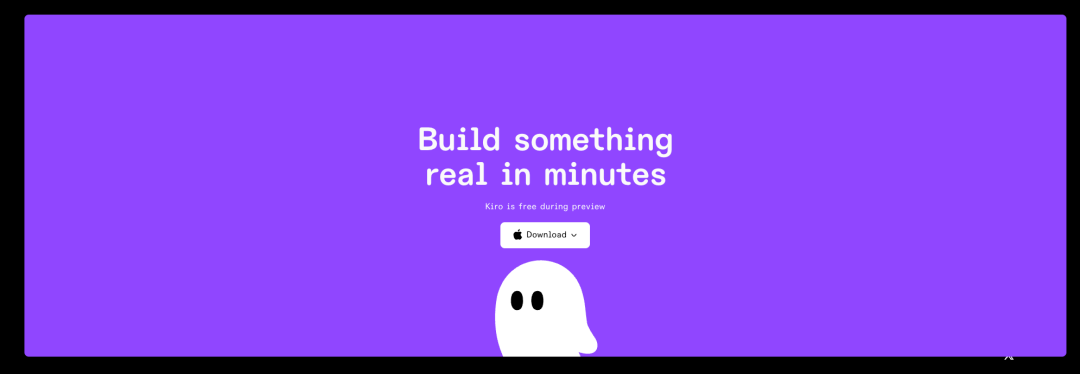
MCPcombo As a practical example of a MCP(Modular Co-programming Protocol) service portfolio content site, which is designed to provide a platform for building different areas of AI Agent Recommended modularized service combinations. For example, build a travel assistant by combining the services of Goldmap and 12306 Agentor combination Minimax,JiMeng-MCP cap (a poem) Replicate to build advanced image generation AgentThe
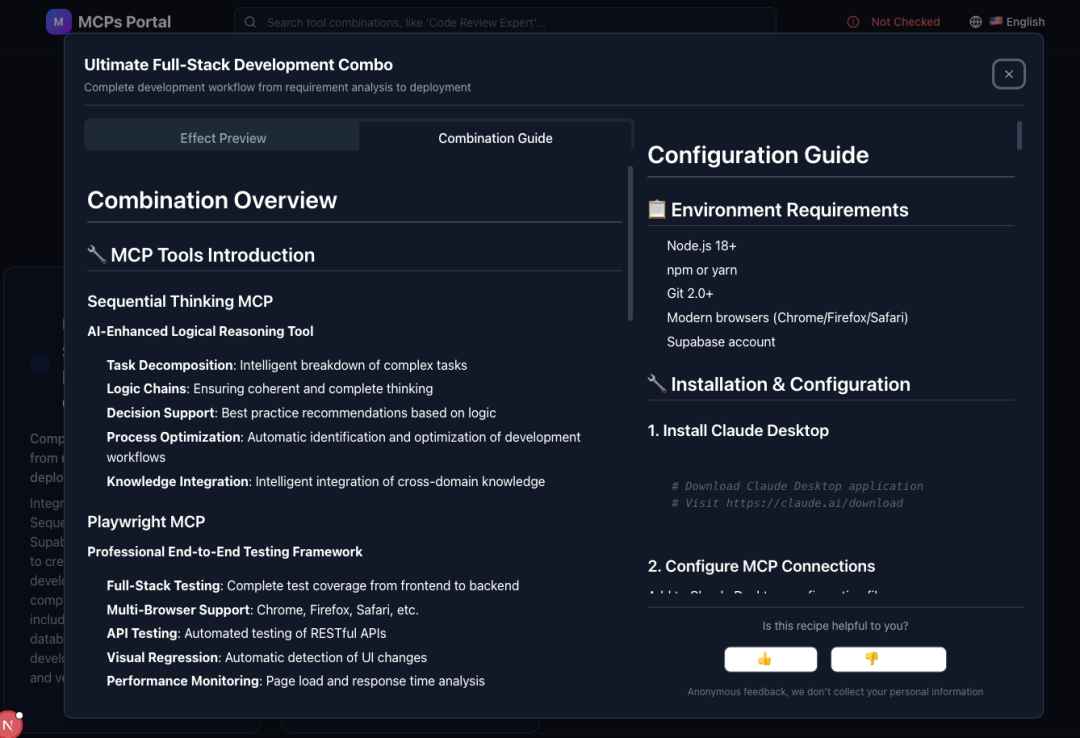
quote
- forbes.com
- dev.to
- itsfoss.com
- geekwire.com






